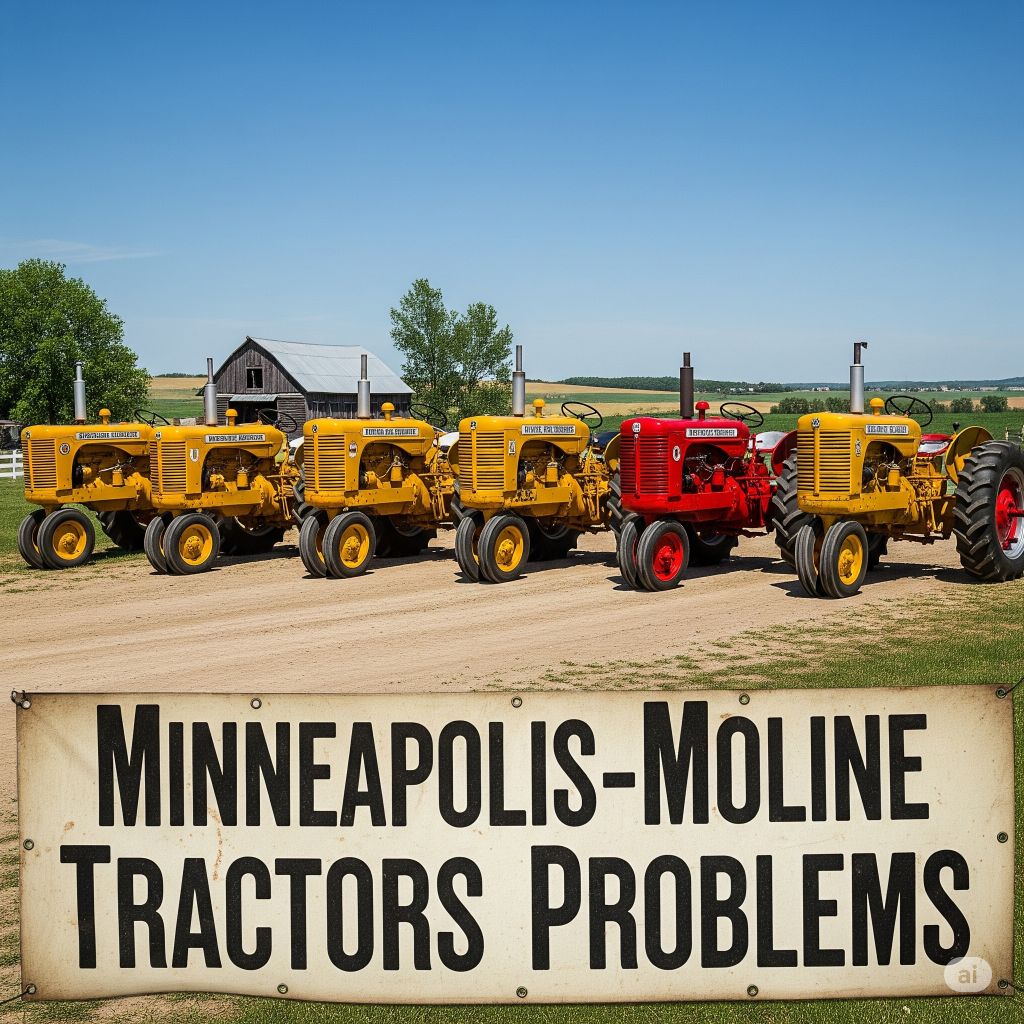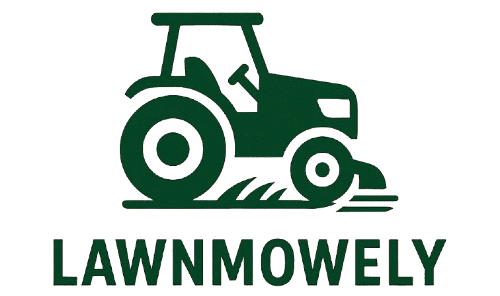
Minneapolis‑Moline (M‑M) was a major U.S. tractor brand until the mid‑1970s. Though discontinued long ago, many of its iconic tractors like the G-series, Jet Star, and M-series remain in use among collectors and working farms. Thanks to rugged engines and simple mechanical design, many survive—but certain models are known for chronic issues that restorers and users should watch.
Here’s a complete guide on Minneapolis‑Moline tractors—including common problems, DIY fixes, series‑by‑series reliability, and models to avoid. No references are included per your request.
1. Common Issues & Practical Fixes
⚠️ Coolant in Oil / Overheating
Several M-series diesels (especially the G-600, G-706, G-900) have been reported to develop coolant leaks into the crankcase—typically from a failed water pump seal or cracked head gasket.
Fix: Replace the water pump and gasket, inspect head bolts for torque, flush cooling system and repair or replace if cracked.
⚠️ Weak Brakes & Poor Stopping Power
Many letter-series and later G-series tractors suffer from weak mechanical drum brakes—especially on long wheelbase row crop models.
Fix: Rebuild or upgrade brake bands, adjust drums, or convert to improved aftermarket brake systems.
⚠️ Hydraulic Sluggishness or Leakage
Hydraulic pumps and valves in, e.g., the M-602 and Jet Star 2, often leak or lose pressure due to worn seals or clogged screens.
Fix: Clean reservoir suction screen, replace seals in lift valves, flex lines, and perform regular oil changes using proper weight fluid.
⚠️ Gearbox or Hi/Lo Transmission Issues
The Ampli-Torc transmissions found in M-504, M‑602, and G-series occasionally suffer from failing low side shifts or inability to engage low gears.
Fix: Rebuild shift fork assemblies, inspect shift drum detents, replace worn clutch packs, and thoroughly bleed the transmission.
⚠️ Carb or Fuel Delivery Problems in Gas/LP Tractors
Gasoline and LP fired tractors like the Z-series or UDLX often stall, surge, or lose power when heated due to clogged carb or fuel tank contamination.
Fix: Fully rebuild the carburetor, clean the fuel tank and sediment bowl, ensure vent lines are clear, and replace inline filters.
2. Series‑Wise Reliability Snapshot
🔸 Letter Series (ZA, ZB, ZTU, UB, UTU, UT) – mid‑’50s
- Strengths: Simple, iconic ROYAL‑Gold styling, rebuildable parts.
- Issues: Hard-starting in high altitude, primitive mechanical brakes, and scarce ignition parts.
- Good for: Restoration and display. Avoid heavy PTO or loader use unless retrofitted.
🔸 Jet Star / 4‑Star / 5‑Star / M‑Series (models like 445, 4‑Star, M‑504, M‑602) – 1960s
- Strengths: Strong engines, independent PTO, and long‑drive transmissions.
- Weaknesses: Early Jet Stars lack hi‑low transmission; G‑Series conversions sometimes leak coolant into engine; hydraulic pumps need frequent servicing.
- Best avoided: early Jet Star units without hi-lo; M‑602s with unaddressed hydraulic wear; any G‑series unit with prior coolant‑in‑oil history.
🔸 G‑Series (GT, GTB, GB, G‑704 to G‑1355) – 1960s‑1970s
- Strengths: Largest M‑M tractors, dual‑range PowerShift, diesel engines up to 141 PTO HP.
- Issues: Turbo diesels may have cracked heads if overheated; brakes remain subpar; higher likelihood of hydraulic valve failures.
- Avoid unless: seller can prove water-in-oil history solved, brake bands rebuilt, and shift module updated.
🔸 Later M‑Series (M‑652, M‑670) – early 1970s
- Strengths: Improved ride comfort, better rear linkage, longer production runs.
- Challenges: Aging electrical wiring, starter drift, and carburetor varnish.
- Ideal for: Light field use; still check fuel tanks, filters, and ignition systems.
3. Models & Builds to Avoid
Here’s a list of M‑M models or production runs that show recurring issues and are best avoided unless fully rebuilt or well maintained:
- Early Jet Star (no low‑gear shift)
• Lacks hi‑lo transmission, making transport or loader work inefficient.
Avoid unless retro-converted to 4‑Star spec. - M‑504 built before full detent upgrade
• Known for slipping hi/lo transmission, wear in shift modulators. - G‑900 or G‑1000 units with coolant-in-oil history
• Many G‑900 owners experienced water‑pump seal failure, gasket leaks, resulting in antifreeze mixing with crankcase oil—leading to bearing wear if unchecked. - M‑602 units with weak hydraulics or lift failure
• Unless rebuild kits and reservoir filters have been regularly serviced, they tend to leak or suffer low lift capacity. - ZB-series tractors, especially UB “Special”
• While generally reliable, some rare configurations (power steering UB units) are nearly impossible to find parts for today.
4. Buyer’s Pre‑Purchase Checklist
- Crankcase oil test: Look for milky residue—may indicate coolant mixing.
- Transmission test: Does low range engage and drive properly when cold?
- Brake function: Test stopping power—drum brakes should engage firmly without fade.
- Hydraulic operation: Raise and lower three-point hitch fully; know if lift feels sluggish or leaks.
- Fuel system check: Fuel tank clean, no rust; carb/socket fuel bowl sediment present.
- Electrical check: Indicators/engine dash lighting works steadily; starter performance when cold.
5. Summary Table: Minneapolis‑Moline Models
| Series / Model | HP / Use | Common Strengths | Weaknesses | Recommendation |
|---|---|---|---|---|
| Letter Series (ZA, ZB) | 30–40 HP, simple | Classic styling, magneto-start | Hard-start, limited power | Good for hobby, not PTO heavy tasks |
| Jet Star (early) | ~45–60 HP | Smooth engine, comfortable seat | No hi-lo gear, weak brakes | Avoid unless upgraded |
| M‑504 / 4-Star | 60–70 HP | Ampli‑Torc gearbox | Shift detent wear, limited hi/lo grip | OK if rebuilt/shock updated |
| M‑602 | 70–85 HP | Robust frame | Hydraulic pump wear, leaks | Avoid if lift weak |
| G‑Series (G‑704 to G‑1000) | 80–140 HP | Diesel engines, power shift | Coolant leaks, brake and shift issues | Avoid early G‑900 unless repair proven |
| M‑652, M‑670 | 85–100 HP | Late‑model refinements | Carb varnish, aging wiring | Solid if serviced |
6. Overall Maintenance Tips
- Change hydraulic oil and filters every 100–150 hours.
- Use proper gear oil in transmission and differential.
- Rebuild water pump seals and thermostat annually.
- Bleed fuel system and replace lines if rusty.
- Replace brake bands and drum shoes to restore safe stopping.
- Use dielectric grease on ignition connections and consider 12‑volt conversion on older magneto models.
🧭 Final Thoughts
Minneapolis‑Moline tractors are still prized for their sturdy construction and vintage appeal. When well-maintained, models like the 4‑Star, later M‑Series, and G‑Series can be functional—and beautiful—working tractors. However, early Jet Stars, M‑504 units with worn transmissions, G‑900 models with coolant contamination history, and UB power‑steering variants carry inherent risk due to parts scarcity or design flaws.
✅ Best picks for reliability:
- Mid-style G‑Series units built after water-pump seal fixes, with strong power and independent PTO.
- M‑652 or M‑670 units, if engine and ignition maintained.
- A fully upgraded Jet Star 2 or 4‑Star with hi-lo transmission.
🚫 Models to avoid unless fully rebuilt:
- Early Jet Stars without hi-lo.
- Unproven G‑900 with coolant-in-oil history.
- M‑602 units with known hydraulic faults.
With solid maintenance, parts availability from collectors clubs and salvage yards, and vintage know-how, many M‑M tractors still deliver dependable service today—just choose wisely and buy #rightthefirsttime#.

I’m David man behind Lawn Mowerly; I’ve been dealing with lawnmowers and Tractors with my father since I was a kid. I know every make and model and what each one is capable of and love helping people find the perfect equipment for their needs.
